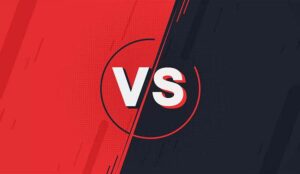Service Level Vs Occupancy
following on from the SL Benchmarking post;
I would be interested to hear what peoples Occupancy Target is for their agents?
In the company I am in, we work to 90/15 for SL and 82% Occupancy. Occupancy is calculated based on (Total Logged In Time – Wait Time).
We are currently looking at revising down our SL targets for the new year. Presently when we hit an 82% Occupancy, we are usually under SL target, it is very rare we satisfy both.
Look forward to your replies.
Question asked by V77SMB
Cannot truly be answered by benchmarking
Your question is one that cannot truly be answered by benchmarking. The SL to occupancy ratio is determined to a great extent by the size of your call centre, with larger centres having the ability to maintain higher occupancy rates. If the people who reply work in centres of different sizes to yours, the comparison is somewhat meaningless. The size of the centre is important due to the spacing of arrivals and the ability to have agents free to take the calls. Moving from 2-10 seats would get much larger gains than from say 500-550 for example, so if you could give more information re seats and AHT, then I think you could get some real help…
With thanks to mrtibbs1999
Answer
Thanks for the response.
AHT – 300 – 315 seconds.
Dealing with approx 30k calls per week
FTE of 130
Actually – FTE of closer to 145.
With thanks to V77SMB
An agent cannot particularly influence their %
On the basis that Occupancy is the output of the staffing applied vs the workload (and your staffing is usually designed around achieving a service level), then an agent cannot particularly influence their %, therefore making it a pretty blunt instrument to essentially bash an agent over the head with.
Even for a Planner it’s not much use as a target, especially if someone else created the forecast and the reason your occupancy was either above or below the expected % was due to workload variations.
Generally speaking, if going for a target for an agent which relates to them being available to work when you want them to, it would be adherence (did I work when you wanted me to) followed in some places by conformance (did I remain in productive states for the total time you scheduled me to be available).
The other part of your question was around how you hit 82% occupancy but not service level. There can be many reasons – the first may simply be that the workload is so low that to hit service level, your staffing needs to be such that you have lower occupancy as a result. If 82% is what you got as your output in the forecasts, then it could be a poor schedule fit, with too many staff when you don’t need them (creating the lower occupancy) and too few staff at some critical points which have severe impacts to the daily service level but are short lived so do not balance the occupancy. It is also worth checking forecast accuracy at interval level for volume and handle times.
With thanks to robtuck
Author: Jonty Pearce
Published On: 12th Apr 2022 - Last modified: 3rd Oct 2025
Read more about - Call Centre Questions, Call Centre Answers















